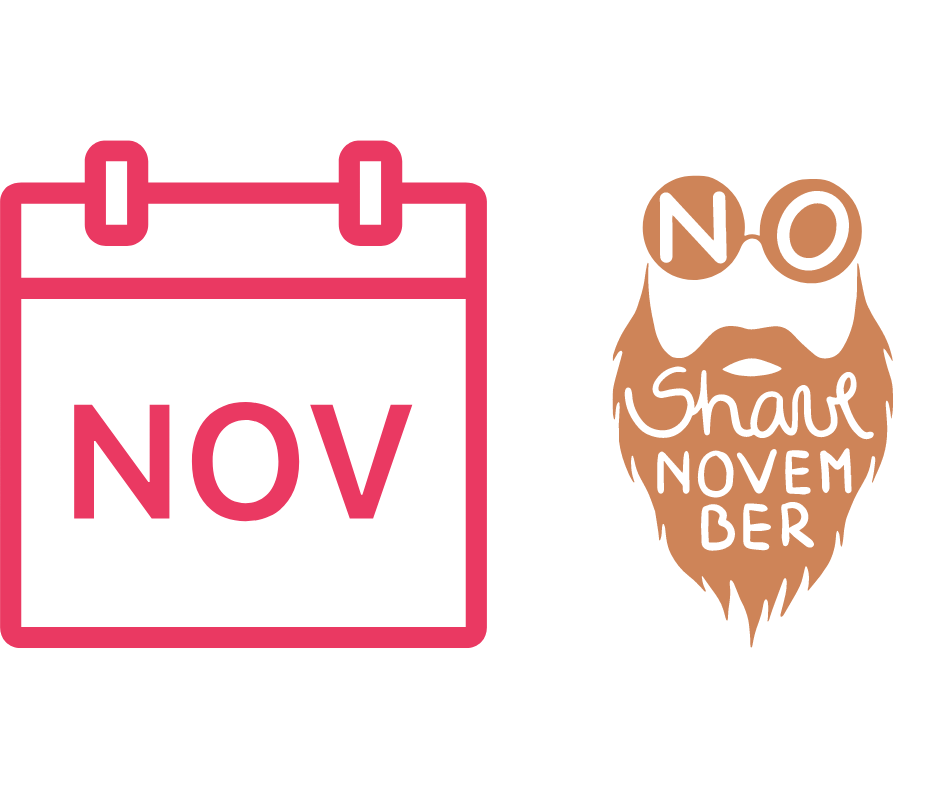A Guide to Peer-to-Peer Fundraising

What is peer-to-peer fundraising?
Peer-to-peer fundraising, also known as P2P fundraising or social fundraising, is a popular and effective method of raising money for nonprofit organizations or personal causes. It involves individuals or teams reaching out to their networks, including friends, family, colleagues, and social media connections, to request donations on behalf of a specific campaign or organization.
The concept behind peer-to-peer fundraising is to leverage personal connections and the power of social networks to expand a fundraising campaign's reach beyond a nonprofit's immediate donor base. This strategy harnesses the passion and dedication of individual supporters who are motivated to make a difference and encourages them to become active participants in fundraising efforts.
A peer-to-peer fundraising campaign typically involves setting up individual or team fundraising pages on dedicated platforms or through specialized software. These pages allow participants to personalize their campaigns and tell their personal stories about why they are fundraising for a specific cause. By sharing these stories on social media platforms and through email templates provided by the platform, participants can generate awareness and engage potential donors.
To ensure the success of a peer-to-peer fundraising campaign, it is essential to provide participants with the necessary tools and resources. This may include fundraising tips, campaign ideas, and access to donation forms and fundraising thermometers to track progress. Organizations can maximize the impact of their peer-to-peer fundraising efforts by equipping participants with the right tools and empowering them to take ownership of their campaigns.
In conclusion, peer-to-peer fundraising offers a powerful and engaging approach to fundraising. By leveraging personal networks and social media platforms, organizations can unlock the potential of individual supporters to raise funds, promote awareness, and expand their donor base. Whether a nonprofit organization or individual fundraising for a personal cause, peer-to-peer fundraising provides a simple and effective method to make a difference worldwide.
The Difference Between Peer-to-Peer Fundraising and Crowdfunding
While both peer-to-peer fundraising and crowdfunding involve raising money from multiple individuals, there are significant differences between the two approaches. Understanding these distinctions can help nonprofits and individuals choose the strategy that best aligns with their goals and resources.
Peer-to-peer fundraising, as previously mentioned, relies on personal connections and social networks to expand the reach of a campaign. It involves recruiting individual supporters to create their own fundraising pages and share their stories with their networks, encouraging others to donate. The success of peer-to-peer fundraising campaigns often hinges on the personal relationships between participants and potential donors and the emotional connections they can build through storytelling.
On the other hand, crowdfunding is a more broad-based approach to fundraising that typically revolves around a centralized platform. Crowdfunding campaigns are often project-based, seeking to fund a specific initiative or product development. Unlike peer-to-peer fundraising, which emphasizes personal connections, crowdfunding aims to reach a wider audience of potential donors passionate about the project or cause itself.
Another key distinction is the level of control participants have over their campaigns. In peer-to-peer fundraising, individuals have the autonomy to create and manage their own pages, allowing them to customize their messaging and tailor their outreach strategies. Crowdfunding campaigns, however, generally have a more standardized structure and presentation, as they are hosted on a single platform that provides limited flexibility for personalization.
Additionally, the funding model differs between the two approaches. In peer-to-peer fundraising, participants are typically soliciting tax-deductible donations for an established nonprofit organization. Donors receive a tax receipt for their contributions, and the funds are typically pooled to support the organization's overall mission. In contrast, crowdfunding campaigns often involve a direct exchange of goods or services, with contributors receiving rewards or pre-purchasing a product or experience.
Both peer-to-peer fundraising and crowdfunding have their benefits and considerations. Peer-to-peer fundraising effectively engages existing supporters and creates deeper connections with potential donors. It also allows for greater flexibility and customization of campaigns. Conversely, crowdfunding provides access to a broader audience and can be a more efficient way to raise funds for specific projects or products.
Ultimately, the choice between peer-to-peer fundraising and crowdfunding depends on the campaign's specific goals, resources, and audience. Nonprofits and individuals should carefully evaluate their needs and consider which approach aligns best with their objectives to maximize the impact of their fundraising efforts.
How Does Peer-to-Peer Fundraising Work?
Peer-to-peer fundraising has become a popular and effective method for nonprofit organizations to raise funds. This approach harnesses the power of personal connections and social networks to expand the reach of a fundraising campaign. But how exactly does peer-to-peer fundraising work?
At its core, peer-to-peer fundraising involves recruiting individual supporters to create their own fundraising pages and share their stories with their networks. These supporters become "peer fundraisers" and act as ambassadors for the organization's cause. They utilize their personal networks, such as family, friends, colleagues, and social media connections, to spread the word about the campaign and encourage others to donate.
To get started with peer-to-peer fundraising, organizations provide their supporters with the necessary tools and resources. This typically includes a platform or software enabling individuals to create and manage their fundraising pages easily. These pages serve as a central hub where peer fundraisers can share their stories, upload photos or videos, and track their progress toward their fundraising goals.
The key to success in peer-to-peer fundraising lies in the personal relationships between the peer fundraisers and their potential donors. This approach leverages the existing trust and connection between individuals, making it more likely for potential donors to contribute to a campaign. By sharing their personal stories and why they support the cause, peer fundraisers can build emotional connections with their networks, inspiring others to donate.
Peer-to-peer fundraising also encourages healthy competition among peer fundraisers. Many platforms incorporate features like leaderboards or fundraising thermometers, which display the progress and success of individual fundraisers. This gamification aspect motivates participants to strive for higher fundraising goals, benefiting the nonprofit organization.
Furthermore, peer-to-peer fundraising can extend beyond online platforms. Supporters can organize peer fundraising events, such as charity runs, walks, or even creative challenges, to engage their networks directly. These events provide opportunities for in-person interactions and further strengthen the bonds between peer fundraisers and potential donors.
In conclusion, peer-to-peer fundraising is an effective strategy for nonprofit organizations to expand their donor base and increase fundraising efforts. By harnessing personal connections and social networks, peer fundraisers can create deeper relationships and inspire others to support the cause. With the power of storytelling and customization, peer-to-peer fundraising has the potential to drive significant donations and raise awareness for worthy causes.
What Are the Benefits of Peer-to-Peer Fundraising?
Peer-to-peer fundraising has gained significant popularity among nonprofit organizations in recent years and for a good reason. This innovative approach offers several benefits that greatly enhance a fundraising campaign's success.
One of the primary advantages of peer-to-peer fundraising is its ability to leverage personal connections. When individuals reach out to their trusted networks of family, friends, colleagues, and social media connections, they tap into an inherent level of trust and credibility. This personal connection significantly increases the likelihood of potential donors contributing to a campaign. People are more willing to support a cause when someone they know and trust endorses it.
Another benefit of peer-to-peer fundraising is the level of customization it allows for individual fundraisers. Each peer fundraiser can create a unique campaign page that reflects their personal story and connection to the cause. This personalization adds authenticity and genuineness to the fundraising efforts, making them more compelling for potential donors. Customized messaging and tailored outreach strategies resonate with the peer fundraisers' networks, increasing engagement and donations.
Peer-to-peer fundraising also offers significant cost savings for nonprofits. The organization can reduce marketing and advertising expenses since peer fundraisers utilize their networks to promote the campaign. This fundraising method relies on organic reach and personal connections, making it a cost-effective strategy for nonprofits looking to maximize their fundraising efforts.
In summary, the benefits of peer-to-peer fundraising are vast. Organizations can significantly enhance their fundraising efforts by leveraging personal connections, customizing campaigns, fostering competition, and organizing events. This approach increases donations and builds a solid and engaged community around a nonprofit's cause. Peer-to-peer fundraising is a powerful tool to drive short-term fundraising success and long-term supporter engagement.
How can I encourage participation in peer-to-peer fundraising campaigns?
Encouraging participation in peer-to-peer fundraising campaigns requires a strategic and thoughtful approach. By implementing the following tips, you can motivate individuals to become peer fundraisers and actively raise funds for your organization.
1. Clearly Communicate the Cause:
To inspire potential peer fundraisers, effectively communicating your organization's mission and impact is crucial. Clearly explain how their participation can make a difference and highlight the importance of their connection to the cause. By illustrating the tangible outcomes and benefits of their efforts, you can motivate individuals to join your campaign.
2. Provide Support and Resources:
A successful peer-to-peer fundraising campaign relies on equipping participants with the necessary tools and resources. Offer comprehensive instructions, training materials, and fundraising tips to empower peer fundraisers. Additionally, provide them with sample email templates, social media posts, and marketing materials that they can customize and share with their networks. The more support and guidance you provide, the more confident and motivated your fundraisers will be.
3. Set Achievable Fundraising Goals:
Setting realistic and achievable fundraising goals is crucial to keep peer fundraisers motivated throughout the campaign. Encourage participants to set goals that align with their capabilities and personal networks. By breaking down the overall fundraising target into smaller milestones, you can create a sense of accomplishment and progress, motivating individuals to reach higher.
4. Recognize and Reward Success:
People appreciate recognition for their efforts. Implement a system of incentives and rewards to acknowledge and celebrate the achievements of your peer fundraisers. This can be personalized shout-outs on social media, highlighting top fundraisers on your campaign page, or organizing special events or experiences for outstanding contributors. Recognizing their success boosts morale and creates a sense of healthy competition among participants.
5. Foster a Sense of Community:
Peer-to-peer fundraising thrives on the power of relationships and connections. Create community among your peer fundraisers by facilitating communication and collaboration. Encourage them to share success stories, challenges, and fundraising strategies with one another. Providing a platform or online forum where fundraisers can connect and motivate each other fosters a supportive environment and enhances their overall experience.
6. Provide Regular Updates and Progress Reports:
Transparency is key to maintaining engagement and enthusiasm among your peer fundraisers. Regularly update participants on the campaign's overall progress and highlight individual achievements. Sharing stories of how funds raised have made a difference can inspire additional contributions and motivate fundraisers to continue their efforts. Keeping everyone informed and involved cultivates a sense of collective responsibility and ownership toward the campaign's success.
With these strategies, you can create an environment conducive to active participation in peer-to-peer fundraising campaigns. By effectively communicating the cause, providing support and resources, setting achievable goals, recognizing success, fostering a sense of community, and providing regular updates, you will motivate individuals to contribute their time, energy, and networks toward the success of your campaign.
Examples of peer-to-peer fundraising
One example of a peer-to-peer fundraising campaign that achieved great success is the "Movember" campaign. Movember is an annual event in November where participants grow mustaches to raise funds and awareness for men's health issues. Through peer-to-peer fundraising, individuals create their fundraising pages and share them with their social networks, asking for donations. Participants leverage their personal connections and social media platforms to spread the word and generate support. Year after year, thousands of individuals join the movement, and the campaign has raised millions of dollars for men's health research and initiatives.
The American Cancer Society's "Relay For Life" event is a longstanding peer-to-peer fundraising campaign that brings communities together to celebrate cancer survivors, remember loved ones lost, and raise funds for research and support programs. Participants form teams and take turns walking or running around a track for 24 hours, symbolizing the ongoing fight against cancer. Each team member sets fundraising goals and taps into their networks to gather donations. The event generates a sense of camaraderie and solidarity among participants as they collectively work towards a common goal.
These examples demonstrate the power of peer-to-peer fundraising when executed effectively. By leveraging personal connections, social media platforms, and the competitive spirit among participants, organizations have raised substantial funds and awareness for their causes. The success of these campaigns highlights the inherent potential of peer-to-peer fundraising to engage and motivate individuals, tapping into their passion and sense of community.
Consider the strategies implemented in these successful examples when planning your peer-to-peer fundraising campaign. Encourage participants to leverage their networks and social media platforms, provide them with personalized fundraising pages and tools, and emphasize the importance of their connection to the cause. With the right approach and support, your peer-to-peer fundraising campaign can exceed expectations and significantly impact your organization's mission.
Conclusion
In conclusion, peer-to-peer fundraising is a powerful and effective method for raising funds for your nonprofit organization or cause. By empowering individuals to create their campaigns and tap into their networks, you can harness the passion and dedication of your supporters to generate substantial support.
Setting clear fundraising goals from the start is crucial to guide your participants and track progress. By providing them with engaging and compelling campaign pages, complete with personal stories and impactful visuals, you can connect with potential donors emotionally and inspire them to contribute.
Utilizing social media platforms allows you to amplify your reach and engage a wider audience. Encourage your participants to regularly share updates about their campaign journey, leveraging the viral nature of social media to create buzz and attract more donors.
Incorporating gamification elements into your peer-to-peer campaign adds a fun and competitive edge. By recognizing top fundraisers, creating leaderboards, and encouraging friendly challenges, you can motivate participants to strive for success and generate even more support.
Gratitude and communication are essential throughout the campaign. Showing appreciation for your participants and keeping them informed about the impact of their contributions strengthens their connection to your cause and encourages ongoing support.
Lastly, providing fundraising resources such as donation forms, email templates, and fundraising tips equips your participants with the tools they need to succeed. The more prepared and supported they feel, the more confident and booming they will be in their fundraising efforts.
In conclusion, peer-to-peer fundraising has the potential to unlock the power of personal connections, social networks, and individual passion to help you achieve your fundraising goals. By following these steps and leveraging the benefits of peer-to-peer fundraising, you can create a successful and impactful campaign for your nonprofit organization or cause.
Fundraising  Your All-in-One Event Management Platform
Your All-in-One Event Management Platform
Host Events with Ease! Events.org's comprehensive event management platform makes it easy to optimize, automate and maximize your organization's entire charitable event calendar.Events.org Benefits:
✓ Simple, Affordable Pricing for Paid Events: $1 per Transaction!
✓ FREE Events are always FREE
✓ Host & Manage Any Event
✓ Dedicated Customer Support
✓ Branded Event & Donation Pages
✓ Donor and Contacts Management (CRM)
✓ Membership Management
✓ Conference Management
✓ Volunteer Management
BONUS: Free access to the iBid's Mobile Auction AutoPilot™ - This automation tool saves you time & stress while streamlining auction tasks. Manage auction items and payment processing, including express checkout & digital receipts!


